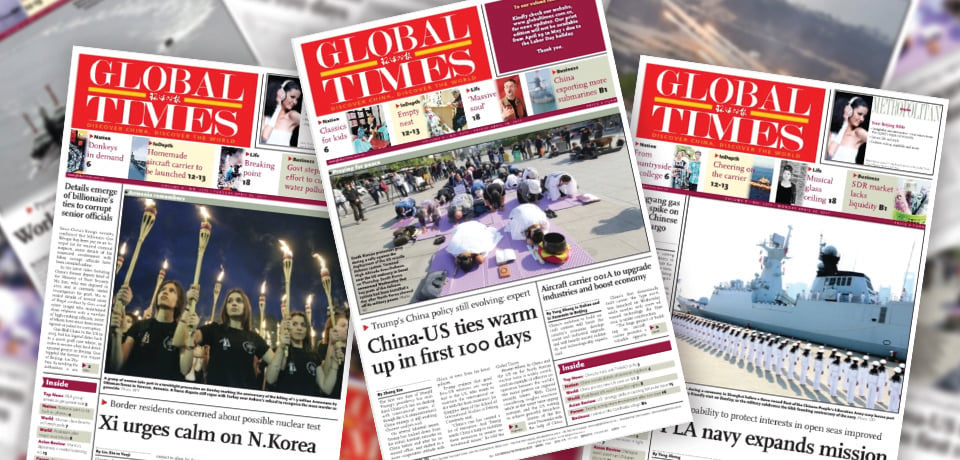In the realm of global media, the Global Times stands out as a prominent voice representing China’s perspective on international affairs. Established in 1993 under the People’s Daily, the Chinese Communist Party’s flagship newspaper, the Global Times has evolved into a platform that reflects the nation’s views on politics, economics, culture, and global events. This article aims to delve into the origins, evolution, and impact of the Global Times as a crucial player in the international media landscape.
Origins and Ownership:
The Global Times was founded as a part of the People’s Daily family, with a specific focus on international news and opinions. Its inception coincided with China’s increasing engagement with the global community, and the newspaper was envisioned as a tool to articulate China’s stance on international issues. While it maintains its connection with the People’s Daily, the Global Times operates with a certain level of editorial independence, allowing it to address global issues with a distinctive voice.
The editorial stance of the Global Times is often seen as aligned with the policies and perspectives of the Chinese government. It serves as a platform to communicate official positions, and its ownership by the People’s Daily underscores its connection to the ruling party. This affiliation, however, does not mean that the Global Times merely serves as a propaganda tool; rather, it provides a nuanced view of China’s foreign policy and its take on global events.
Evolution and Expansion:
Over the years, the Global Times has evolved significantly, both in terms of content and reach. What began as a primarily Chinese-language newspaper expanded its scope by introducing an English-language edition in 2009. This move was pivotal in reaching a global audience and engaging with international readers who sought insights into China’s perspectives.
The expansion was not limited to language; the Global Times embraced digital media, establishing a strong online presence through its website and social media platforms. The reach of the Global Times extends beyond China’s borders, with an increasing number of readers around the world turning to it for insights into Chinese viewpoints on global affairs.
Editorial Voice and Perspectives:
One distinctive feature of the Global Times is its editorial voice, which is often assertive and unapologetic. While some critics argue that the newspaper tends to reflect the Chinese government’s official line, others see it as a platform that represents a diversity of voices within China. The Global Times provides a forum for opinions that may not align with mainstream Western perspectives, offering a counter-narrative that challenges the prevailing discourse on certain issues.
The newspaper’s editorial stance is particularly evident in its coverage of sensitive topics such as Taiwan, Hong Kong, and Xinjiang. It serves as a window into China’s official position on these matters and helps shape international perceptions. The Global Times is not hesitant to take a confrontational approach when it believes China’s interests are being undermined, making it a crucial player in shaping the narrative surrounding the country.
Influence and Impact:
The Global Times wields significant influence within China and abroad. Domestically, it contributes to shaping public opinion by disseminating the government’s views on global events. It serves as a platform for Chinese intellectuals, policymakers, and experts to express their opinions, fostering a diverse discussion within the country.
Internationally, the Global Times plays a crucial role in influencing global perceptions of China. Its English-language edition allows it to reach a broader audience, offering an alternative perspective to the dominant Western narrative. This is particularly relevant in the era of information warfare, where nations strive to shape global opinions to align with their interests.
However, the Global Times is not without its controversies. Critics argue that it engages in a form of “wolf warrior diplomacy,” characterized by aggressive rhetoric and a confrontational style. This approach, they contend, may contribute to escalating tensions between China and other nations. On the other hand, supporters see it as a necessary assertiveness in the face of what China perceives as biased or unfair portrayals in the international media.
Challenges and Criticisms:
While the Global Times has become a formidable player in the global media landscape, it faces several challenges and criticisms. One recurring critique is its perceived lack of editorial independence due to its association with the People’s Daily and, by extension, the Chinese Communist Party. This raises questions about the extent to which the newspaper can present a balanced and objective view of international events.
Another criticism revolves around its confrontational editorial style, which some argue may hinder constructive dialogue between China and other nations. The use of aggressive rhetoric and the adoption of a nationalist tone in certain articles contribute to the perception of the Global Times as a tool for advancing the Chinese government’s agenda rather than fostering genuine international understanding.
Conclusion:
The Global Times has emerged as a crucial instrument in China’s efforts to communicate its perspectives on global affairs. Its evolution from a domestic newspaper to an internationally recognized media outlet underscores China’s desire to actively participate in shaping the global narrative. While its association with the People’s Daily and the Chinese government invites scrutiny, the Global Times serves as a valuable source for understanding China’s views on critical issues.
As the global media landscape continues to evolve, the Global Times will likely face ongoing challenges in balancing its role as a mouthpiece for the Chinese government and its aspiration to be a respected international news outlet. Its impact on shaping perceptions, influencing opinions, and contributing to global dialogue cannot be ignored, making it a media entity that merits continued observation and analysis in the years to come.

